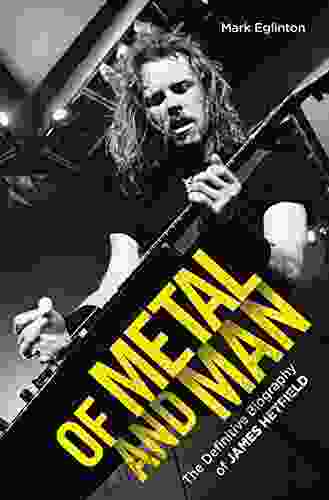The Interrogators Who Used Brains Not Brutality To Take Down The Deadliest Man

In the annals of law enforcement, the name "Unabomber" strikes terror into the hearts of many. For years, this elusive serial bomber terrorized the United States, sending deadly packages to unsuspecting victims. The FBI's relentless pursuit of the Unabomber became one of the most high-profile and challenging investigations in American history.
At the heart of this extraordinary manhunt was a team of brilliant interrogators who played a pivotal role in unraveling the mystery surrounding the Unabomber. They were not the typical interrogators one might imagine, relying on brute force or intimidation. Instead, they employed an innovative approach that focused on understanding the mind of the bomber.
4.7 out of 5
| Language | : | English |
| File size | : | 959 KB |
| Text-to-Speech | : | Enabled |
| Screen Reader | : | Supported |
| Enhanced typesetting | : | Enabled |
| Word Wise | : | Enabled |
| Print length | : | 304 pages |
In this engaging article, we will delve into the extraordinary story of the interrogators who used brains, not brutality, to take down the deadliest man. We will explore their unique methods, the challenges they faced, and the groundbreaking techniques that ultimately led to the Unabomber's capture.
The Interrogators
The team of interrogators assigned to the Unabomber case was led by Special Agent Kathleen Puckett. Puckett was a seasoned interrogator with a reputation for her empathy and exceptional communication skills. She believed that understanding the motivations and thought processes of criminals was crucial to obtaining confessions and valuable information.
Joining Puckett was Special Agent Jim Fitzgerald, a brilliant profiler who had a deep understanding of the psychological dynamics of serial killers. Fitzgerald was instrumental in developing a profile of the Unabomber that would guide the investigation.
Rounding out the team was Special Agent Larry Potts, a linguistics expert who specialized in analyzing written documents. Potts' expertise would prove invaluable in deciphering the Unabomber's cryptic manifestos.
The Challenge
The Unabomber presented a unique and daunting challenge to law enforcement. He was meticulous and elusive, leaving behind few clues and no witnesses. His attacks were carefully planned and executed with precision, making it difficult to track his movements.
Moreover, the Unabomber was highly intelligent and paranoid. He took great pains to conceal his identity and communication methods, making it nearly impossible to infiltrate his network.
The Approach
Faced with these challenges, the interrogators knew that traditional methods would not suffice. They needed to find a new approach, one that would resonate with the Unabomber's unique mindset.
Puckett's background in psychology and communication led her to believe that empathy and understanding were key to unlocking the Unabomber's secrets. She recognized that he was not a typical criminal but rather a deeply troubled individual with a distorted worldview.
The interrogators decided to focus on building a rapport with the Unabomber, establishing a connection that would allow them to delve into his motivations and beliefs. They believed that by understanding his perspective, they could gain valuable insights into his behavior.
The Techniques
The interrogators employed a variety of innovative techniques to engage with the Unabomber. They used non-confrontational language, avoiding accusatory or judgmental tones. Instead, they presented themselves as listeners, eager to hear his views and understand his experiences.
They also employed active listening skills, demonstrating empathy and understanding by paraphrasing his statements and reflecting his emotions. This approach helped build trust and created a safe space for the Unabomber to share his thoughts.
Fitzgerald's expertise in profiling was crucial in understanding the Unabomber's psychological makeup. He drew parallels between the bomber's writings and the behavior of other serial killers, providing insights into his motivations and potential weaknesses.
Potts' linguistic analysis of the Unabomber's manifestos played a pivotal role in identifying linguistic patterns and subtle shifts in language that could provide clues to his identity or location.
The Breakthrough
After months of patient and persistent interrogation, the interrogators finally achieved a breakthrough. The Unabomber, whose real name was Theodore Kaczynski, began to reveal details about his life and motivations.
Kaczynski expressed a deep resentment towards modern society, which he believed was destroying the environment and dehumanizing individuals. He saw his bombings as a form of protest against the technological advancements that he believed were eroding human values.
The interrogators' understanding of Kaczynski's beliefs allowed them to anticipate his objections and counter his arguments in a respectful and non-combative manner. They gradually chipped away at his defenses, building trust and establishing a connection that would ultimately lead to his confession.
The
In 1996, Theodore Kaczynski was arrested and charged with the Unabomber bombings. His capture was a testament to the extraordinary skills and perseverance of the interrogators who had used brains, not brutality, to take down one of the deadliest men in American history.
The interrogators' innovative approach, which focused on empathy, understanding, and respect, set a new paradigm for law enforcement and interrogation techniques. Their groundbreaking work demonstrated that even the most elusive and hardened criminals can be brought to justice through dialogue and the power of human connection.
The story of the interrogators who took down the Unabomber is not just a tale of triumph over evil. It is also a lesson in the power of empathy, communication, and the unwavering pursuit of justice. By understanding the mind of a criminal, by respecting their humanity, and by engaging in meaningful dialogue, even the darkest of cases can be solved.
4.7 out of 5
| Language | : | English |
| File size | : | 959 KB |
| Text-to-Speech | : | Enabled |
| Screen Reader | : | Supported |
| Enhanced typesetting | : | Enabled |
| Word Wise | : | Enabled |
| Print length | : | 304 pages |
Do you want to contribute by writing guest posts on this blog?
Please contact us and send us a resume of previous articles that you have written.
 Book
Book Novel
Novel Page
Page Chapter
Chapter Text
Text Story
Story Genre
Genre Reader
Reader Library
Library Paperback
Paperback E-book
E-book Magazine
Magazine Newspaper
Newspaper Paragraph
Paragraph Sentence
Sentence Bookmark
Bookmark Shelf
Shelf Glossary
Glossary Bibliography
Bibliography Foreword
Foreword Preface
Preface Synopsis
Synopsis Annotation
Annotation Footnote
Footnote Manuscript
Manuscript Scroll
Scroll Codex
Codex Tome
Tome Bestseller
Bestseller Classics
Classics Library card
Library card Narrative
Narrative Biography
Biography Autobiography
Autobiography Memoir
Memoir Reference
Reference Encyclopedia
Encyclopedia Martha Weinman Lear
Martha Weinman Lear Nicola Lees
Nicola Lees Maria Walsh
Maria Walsh Matt Perman
Matt Perman Maurice Samuels
Maurice Samuels Mark Clark
Mark Clark Mark Halperin
Mark Halperin Matthew Israel
Matthew Israel Paula Durlofsky
Paula Durlofsky Matthew Coxon
Matthew Coxon Tom Stone
Tom Stone Mark Vonnegut
Mark Vonnegut Mike Bryon
Mike Bryon Yasmine Ferguson
Yasmine Ferguson W E Vine
W E Vine Mark Connelly
Mark Connelly Mark Solms
Mark Solms Maria Lis Balchin
Maria Lis Balchin Samuel Leeds
Samuel Leeds Marisa Bardach Ramel
Marisa Bardach Ramel
Light bulbAdvertise smarter! Our strategic ad space ensures maximum exposure. Reserve your spot today!

 Glen PowellAmerican Women Writers and the Feminist Imagination: Unlocking the Power of...
Glen PowellAmerican Women Writers and the Feminist Imagination: Unlocking the Power of... Donovan CarterFollow ·15.5k
Donovan CarterFollow ·15.5k Deion SimmonsFollow ·5k
Deion SimmonsFollow ·5k Ray BlairFollow ·19.1k
Ray BlairFollow ·19.1k Roland HayesFollow ·12.5k
Roland HayesFollow ·12.5k Albert ReedFollow ·11.6k
Albert ReedFollow ·11.6k Dawson ReedFollow ·17.5k
Dawson ReedFollow ·17.5k Scott ParkerFollow ·12.4k
Scott ParkerFollow ·12.4k Robert BrowningFollow ·6.6k
Robert BrowningFollow ·6.6k

 Roberto Bolaño
Roberto BolañoUnveiling the Beauty and History of the Medici Iris: A...
In the realm of...

 Theodore Mitchell
Theodore MitchellImproving Gut Health in Poultry: Unlocking the Path to...
In the ever-evolving field of...

 Victor Hugo
Victor HugoPersonalized Medicine with a Nanochemistry Twist:...
The future of healthcare...

 George Martin
George MartinA Year Of Wine: Perfect Pairings Great Buys And What To...
## Year of Wine: An Epic Journey Through the...

 Tom Hayes
Tom HayesDelve into the Enigmatic World of Southern Africa's...
Embark on a captivating journey through the...
4.7 out of 5
| Language | : | English |
| File size | : | 959 KB |
| Text-to-Speech | : | Enabled |
| Screen Reader | : | Supported |
| Enhanced typesetting | : | Enabled |
| Word Wise | : | Enabled |
| Print length | : | 304 pages |












